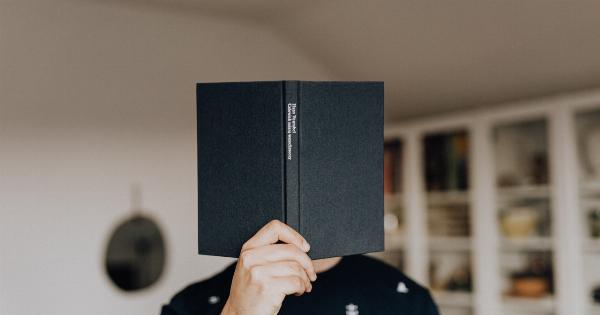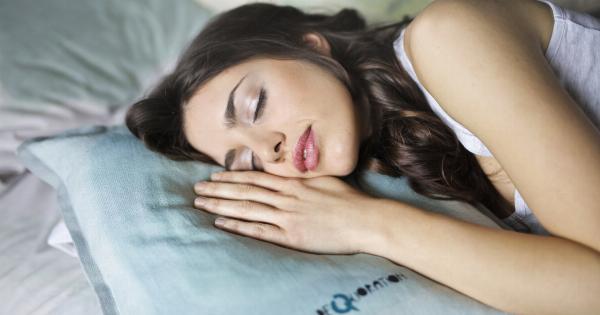Have you ever experienced that sensation of falling just as you are about to drift off to sleep? It can be quite unnerving and often leaves us wondering why it happens. This phenomenon is known as a hypnic jerk or a sleep start, and it is quite common.
In this article, we will explore the possible reasons behind this sensation and delve into the fascinating world of sleep science.
What is a Hypnic Jerk?
A hypnic jerk is an involuntary muscle spasm or twitch that occurs just as you begin to fall asleep. It is often characterized by a sudden sensation of falling, which can startle you awake.
Some people describe it as a feeling of tripping or slipping off the edge of a cliff. These jerks are completely normal and usually harmless, although they can be quite bothersome if they occur frequently.
The Physiology of a Hypnic Jerk
While the exact cause of hypnic jerks is not completely understood, there are several theories about why they occur.
One theory suggests that as your muscles relax and your body prepares for sleep, certain biological changes take place that may trigger these jerks. Another theory suggests that the brain, in its transition from wakefulness to sleep, misinterprets the relaxation of muscles as a sign of falling, leading to the sensation.
It is important to note that hypnic jerks are more common in certain conditions, such as having irregular sleep patterns, being sleep-deprived, or experiencing high levels of stress and anxiety.
Caffeine and certain medications can also increase the likelihood of experiencing these jerks. Additionally, factors like sleep position, sleep environment, and even the ambient temperature of the room can play a role in the occurrence of hypnic jerks.
Evolutionary Explanations
Some theories propose that hypnic jerks have evolutionary roots.
According to these theories, our ancestors slept in trees to avoid predators, and the twitching or jerking motion when falling asleep was an instinctive response to prevent them from falling out of the trees. While this hypothesis is intriguing, it lacks substantial scientific evidence to support it. Nonetheless, it offers an interesting perspective on the origins of this phenomenon.
Related Sleep Disorders
While hypnic jerks are generally harmless, they can sometimes be associated with other sleep disorders. Periodic limb movement disorder (PLMD) is a condition where a person experiences repetitive limb movements during sleep.
These movements can incorporate jerking motions similar to hypnic jerks. Restless legs syndrome (RLS) is another disorder that causes discomfort and an irresistible urge to move the legs, often leading to jerky movements during sleep.
It is essential to differentiate hypnic jerks from these sleep disorders to ensure appropriate diagnosis and treatment.
Ways to Reduce Hypnic Jerks
If hypnic jerks are interfering with your ability to fall asleep or impacting the quality of your sleep, there are a few strategies you can try to reduce their occurrence:.
- Establish a Regular Sleep Schedule: Maintaining a consistent sleep routine helps regulate your body’s internal clock and can minimize the occurrence of hypnic jerks.
- Create a Relaxing Bedtime Routine: Engage in relaxing activities before bed, such as reading a book or taking a warm bath, to prepare your mind and body for sleep.
- Avoid Stimulants: Limit your intake of caffeine, nicotine, and alcohol, especially close to bedtime, as they can disrupt sleep patterns and increase the likelihood of hypnic jerks.
- Optimize Your Sleep Environment: Ensure your bedroom is dark, quiet, and at a comfortable temperature to create a conducive sleep environment.
- Manage Stress: Practice stress reduction techniques, such as deep breathing exercises, meditation, or mindfulness, to relax your mind and body before sleep.
- Exercise Regularly: Engaging in regular physical activity can improve sleep quality and reduce the occurrence of sleep start jerks.
- Consult a Healthcare Professional: If hypnic jerks persist and significantly disrupt your sleep, it is advisable to seek medical advice to rule out any underlying sleep disorders or other health conditions.
The Intriguing Nature of Sleep
While hypnic jerks may not be completely understood, they highlight the unique and fascinating nature of sleep. Sleep is a complex process that scientists are continually studying and trying to comprehend.
It is a time when our bodies go through essential restorative processes, and disruptions in this process can lead to various health issues.
Understanding why we experience hypnic jerks is just one small piece of the puzzle. By examining the intricacies of sleep, scientists hope to unlock the secrets to improving sleep quality, treating sleep disorders, and promoting overall well-being.































